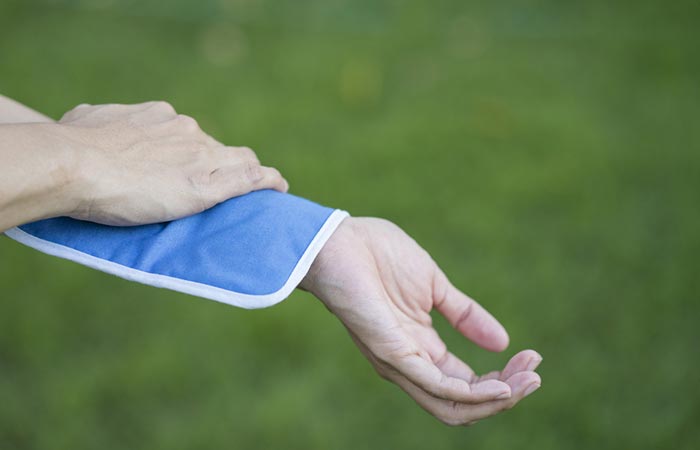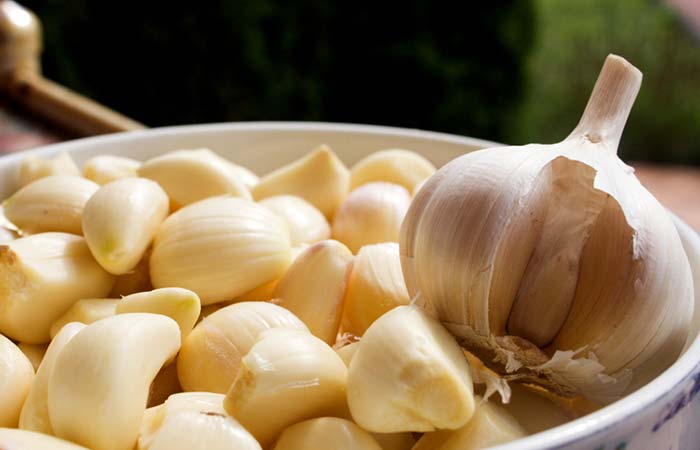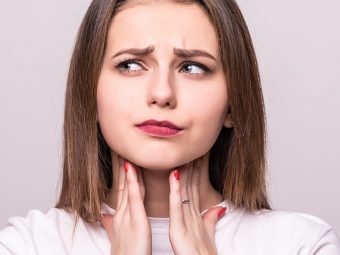6 Effective Home Remedies & Natural Treatments For Shingles
Deal with the stubborn blisters and rashes of shingles with effective home remedies.

Many individuals affected by chickenpox are at a high risk of developing shingles. It is a type of infection where the affected person may develop blisters or rashes around the torso.
Early diagnosis and effective treatment for shingles may help manage this infection. As per an estimate, one out of three persons in the US may develop shingles at least once in their life, and there are approximately a million cases diagnosed (1).
If you have a history of chickenpox and observe any stubborn rashes or blisters, it is advised to get tested as there is a high chance that you have shingles. Read on to know more about it.
In This Article
What Is Shingles?
Shingles is an infection caused by the varicella-zoster virus. It is medically referred to as herpes zoster. This infection is the result of the same virus responsible for causing chickenpox.
Shingles can cause painful rashes anywhere on the body. However, most often, it looks like a single stripe of blisters that wraps around one side of your body, typically on your neck, face, or torso. Shingles is characterized by a red skin rash that causes pain along with a burning sensation.
In individuals who have had chicken pox earlier, the virus continues to remain dormant in the nerve tissues surrounding the spinal cord and brain. After many years, this inactive virus may get reactivated in the form of shingles.
While shingles is not a life-threatening condition, it can turn out to be quite painful. However, early treatment reduces the risk of complications, and getting a vaccine can help reduce the risk of developing the infection.
The available vaccination for shingles is approved for those 50 years or older. However, it is recommended that the vaccine is given at the age of 60, when the risk of developing shingles is the highest.
Shingles progresses in three stages, more information about which is provided right below.
Stages And Symptoms
Shingles can be classified into three stages based on the progression and varying symptoms in each stage.
1st Stage – Prodromal Phase
The first stage, also referred to as the prodromal phase, is often characterized by symptoms like:
- Headache
- Pain and burning sensation on one side of the body or in small patches all over the body
- Malaise or discomfort
- Photophobia
2nd Stage – Acute Phase
The second stage or acute phase is characterized by a dermatomal rash.
The characteristics of the rash include:
- Fluid-filled blisters that can break easily
- Red patches
- A rash that tends to wrap around one side of your torso
- The appearance of a rash on the face and ears
Such rashes are also accompanied by other symptoms like unbearable itching, fever, chills, headache, fatigue, and pain. These rashes last for 7-10 days, and most affected individuals heal in 4 weeks.
3rd Stage
The third stage of shingles is usually not experienced by all affected individuals. It is associated with complications like:
- Rashes that involve the eyes
- Postherpetic neuralgia – A condition that can affect the nerve fibers and skin
- Loss of hearing, severe pain in one ear, dizziness, or loss of taste on your tongue that may be symptoms of Ramsay Hunt syndrome
- Subsequent bacterial infections
As we have already mentioned before, shingles is caused by the varicella-zoster virus that is also responsible for causing chickenpox. Let us now look into the causes and risk factors for shingles.
Causes And Risk Factors For Shingles
Those with a history of chickenpox are at an increased risk of developing shingles. Once you recover from the former, the varicella-zoster virus that has already entered your nervous system continues to remain dormant there for years.
Eventually, it can get reactivated and travel via your nerve pathways and reach the surface of your skin. This results in shingles. But, not all individuals who have had chickenpox will develop shingles.
Some factors are associated with increasing your risk of developing shingles after having chickenpox. They include:
- Age – Those over 50 years of age are at increased risk.
- Certain medical conditions like HIV/AIDS and cancer that weaken your immunity can also increase your risk of getting shingles.
- Undergoing cancer treatments
- Certain medications like steroids
Administration of vaccines is widely followed to reduce the chances of getting shingles. There is no cure for shingles, but your doctor may prescribe anti-inflammatory, antiviral, narcotic, and antihistamine medications to ease the symptoms and shorten the length of the infection.
There are also some natural remedies available that can help in alleviating the symptoms of shingles. Some of the best ones are discussed right below.
6 Home Remedies To Manage The Symptoms Of Shingles
6 Natural Remedies To Manage Shingles
1. Oatmeal Baths
You Will Need
- 1-2 cups of oatmeal
- Water
What You Have To Do
- Add one to two cups of oatmeal to your bath filled with water.
- Soak in the bath for 15-20 minutes.
How Often You Should Do This
You can do this once daily.
Why This Works
The antioxidant and anti-inflammatory properties of oatmeal can help soothe itchiness and inflammation in the affected area (2).
[ Read: Benefits Of An Oatmeal Bath ]
2. Cold/Hot Compress
You Will Need
A cold compress
What You Have To Do
- Apply a cold/hot compress to the affected area.
- Place it there for 15-20 minutes and remove.
- Pat the area dry after removing the pack.
- Wash or dispose of the compress immediately.
How Often You Should Do This
You may do this 1-2 times daily until the blisters stop oozing.
Why This Works
Cold compresses do a wonderful job in reducing inflammation and swelling of the skin following an injury (3). Hence, they may also help in alleviating inflammation associated with shingles. Hot compresses are effective in treating the symptoms of cold sores (4). They may, therefore, also be effective in treating the symptoms of shingles.
3. Vitamins
Vitamins C and D can help in the treatment of shingles. While vitamin D has immunomodulatory activities, intravenous vitamin C can help alleviate pain and other symptoms associated with the infection (5), (6).
Foods rich in these vitamins include citrus fruits, green leafy veggies, cheese, eggs, and fish. It is best to consult a doctor before going ahead with additional supplements for these vitamins.
4. Coconut Oil
You Will Need
- 1 tablespoon of virgin coconut oil
- Cotton balls
What You Have To Do
- Using a cotton ball, apply some virgin coconut oil to the affected areas.
- Leave it on for 20-30 minutes before rinsing it off.
- Discard the used cotton ball.
How Often You Should Do This
You may do this 1-2 times daily.
Why This Works
The anti-inflammatory and analgesic properties of coconut oil can help in alleviating itching and pain that occur with shingles (7).
5. Garlic
You Will Need
- 4-5 garlic cloves
- Cotton pads
What You Have To Do
- Take four to five garlic cloves and peel them.
- Crush the cloves and apply the mixture to the affected area using a cotton ball or cotton pad.
- Leave it on for 15-30 minutes before rinsing off with water.
- Discard the used cotton balls.
How Often You Should Do This
You can do this 1-2 times daily.
Why This Works
The antiviral and anti-inflammatory nature of the garlic compounds can help in combating the symptoms of inflammation and pain while also fighting the virus responsible for triggering the infection (8), (9).
6. Tea Tree Oil
You Will Need
- 3 drops of tea tree oil
- 1-2 teaspoons of coconut oil
- Cotton balls
What You Have To Do
- Add three drops of tea tree oil to one to two teaspoons of coconut oil. Mix well.
- Using a cotton ball, apply the mixture to the affected area.
- Leave it on for 20-25 minutes.
- Rinse it off with warm water.
- Discard the used cotton ball.
How Often You Should Do This
You can do this 1 or 2 times daily.
Why This Works
Tea tree oil possesses impressive anti-inflammatory properties that can help reduce the itching and pain associated with shingles. Its antiviral nature can help speed up your recovery (10).
You may also follow the below tips to prevent the onset of shingles.
How To Prevent Shingles
- Get yourself and your kids vaccinated for chickenpox if you have never had the disease. The vaccine may not necessarily prevent everyone from getting chickenpox, but it has been reported to be successful in 9 out of 10 individuals who took it.
- Adults in the age group of 50-60 years should take a vaccination for shingles.
As shingles is contagious, it is important that you take precautions to prevent spreading of the infection to other individuals.
Here’s what you need to do:
- Keep your rash/blisters covered until they dry completely.
- Avoid contact with individuals who have never had chickenpox or have weak immunity.
- Avoid sharing of utensils.
- Wash your hands frequently.
Shingles or herpes zoster is a viral infection caused by the Varicella zoster virus. It causes fluid-filled blisters, red patches, and rashes. Getting a vaccine may help reduce the development of infections. However, you may also check out some natural treatments for shingles. Oatmeal baths, cold or hot compress, vitamins, coconut oil, garlic, and tea tree oil are effective remedies to manage the symptoms of this infection. In addition, washing your hands frequently, keeping the blisters covered until they dry, and avoiding contact with infected individuals may help prevent shingles. Follow these remedies and tips, and if you still experience the symptoms associated with this viral infection, immediately contact your doctor.
Frequently Asked Questions
Can you put hydrogen peroxide on shingles?
Anecdotal evidence suggests that the application of hydrogen peroxide may reduce the itching caused by shingles.
Can you spread shingles to other parts of your body?
Yes, in rare cases, shingles may spread to other parts of the body, if the immune system is weak (11).
Can lack of sleep cause shingles?
Yes, lack of sleep may weaken your immune system and increase your risk of developing shingles (12).
Is yogurt good for shingles?
Yes, probiotics like yogurt may strengthen the immune system and reduce the severity of viral infections (13). However, studies are limited and more research needs to be conducted to understand the link between the two.
Key Takeaways
- Shingles are a result of the same virus that causes chickenpox.
- The virus continues to be present in certain nerve tissues in some individuals affected with chickenpox. Shingles emerge when the virus gets reactivated.
- You can get vaccinated to reduce the risk of shingles. You may also use several home remedies to relieve its painful symptoms.
References
- “Shingles (Herpes Zoster)” Centers For Disease Control and Prevention.
- “Oatmeal in dermatology: a brief review.” Indian Journal of Dermatology, Venereology and Leprology, US National Library of Medicine.
- “Effects of Topical Icing on Inflammation, Angiogenesis, Revascularization, and Myofiber Regeneration in Skeletal Muscle Following Contusion Injury” Frontiers in Physiology, US National Library of Medicine.
- “The use of local concentrated heat versus topical acyclovir for a herpes labialis outbreak: results of a pilot study under real life conditions” Clinical, Cosmetic, and Investigational Dermatology, US National Library of Medicine.
- “Vitamin D is closely linked to the clinical courses of herpes zoster: From pathogenesis to complications” Medical Hypotheses, US National Library of Medicine.
- “Intravenous Vitamin C in the treatment of shingles: Results of a multicenter prospective cohort study” Medical Science Monitor, US National Library of Medicine.
- “Anti-inflammatory, analgesic, and antipyretic activities of virgin coconut oil.” Pharmaceutical Biology, US National Library of Medicine.
- “Immunomodulation and Anti-Inflammatory Effects of Garlic Compounds” Journal of Immunology Research, US National Library of Medicine.
- “In vitro virucidal effects of Allium sativum (garlic) extract and compounds.” Planta Medica, US National Library of Medicine.
- “Melaleuca alternifolia (Tea Tree) Oil: a Review of Antimicrobial and Other Medicinal Properties” Clinical Microbiology Reviews, US National Library of Medicine.
- “Shingles: Overview” Institute for Quality and Efficiency in Health Care (IQWiG), US National Library of Medicine
- “The Incidence and Risk of Herpes Zoster in Patients With Sleep Disorders” Medicine, US National Library of Medicine
- “Probiotic Effects against Virus Infections: New Weapons for an Old War” Foods, US National Library of Medicine











